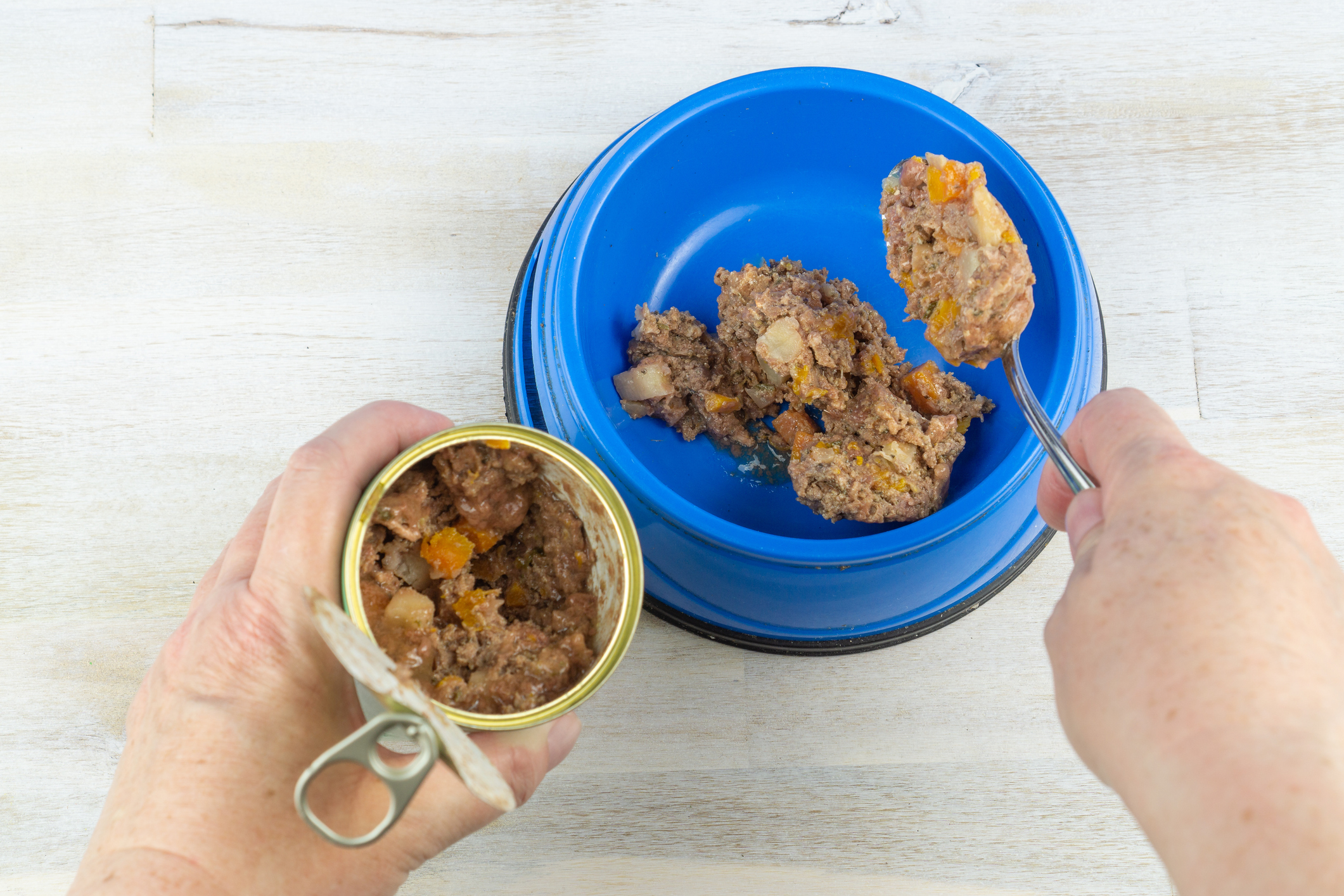Hey Ollie blog readers! We’re offering you an exclusive 60% OFF your starter box! Try now!
If your dog has been diagnosed with diabetes, it’s important to look for dog food that’s appropriate for his disease. Diabetic dog food refers to food that is formulated in a way that helps your dog maintain a healthy weight and insulin response. Diabetes can be a scary condition, but the good news is that diabetic dogs can still live long, healthy lives. Here’s how to find the best food for your diabetic dog.

What is Diabetic Dog Food?
Diabetic dog food refers to anything you feed your pup to properly manage his diabetes, a disease that affects a high number of dogs. In the Dog Owner’s Home Veterinary Handbook, James M. Griffin, MD, and Liisa D. Carlson, DVM, explain, “Diabetes mellitus, sometimes called sugar diabetes, is a common disease in dogs. Golden Retrievers, German Shepherds, Keeshonden, and Poodles have the highest incidence, but all breeds can be affected.” Some prescription “diabetic dog foods” exist and some commercially produced dog foods are marketed toward pet owners who have dogs with diabetes, but in almost all cases, a dog will fare well with normal food that is high in fiber and low in simple carbohydrates.
How to Feed a Diabetic Dog
The best food for a diabetic dog depends on the dog’s specific requirements. Many dogs suffering from diabetes are overweight and need to lose weight to successfully manage their diabetes as obesity makes it more difficult for a dog to process insulin. Other diabetic dogs are underweight and should gain a bit to be healthier and happier. The best food choice for diabetic dogs varies, but here are a four things to look for.
1. Diabetic Dog Food Approved by Your Vet
In order to manage your dog’s care properly, it’s critical to discuss caloric requirements and insulin treatment with your vet. Before making any changes in your dog’s food, talk to your vet to see what she recommends.
2. High-Fiber, Low-Sugar Dog Food
In most cases, your veterinarian will recommend a high-fiber, low-sugar dog food that focuses on healthy protein. Studies have shown that diets higher in fiber help minimize blood sugar fluctuations after eating. Fiber may also help an overweight diabetic dog lose weight.
Griffin and Carlson say, “Hyperglycemia is less likely to occur if a dog is fed foods containing high concentrations of fiber and complex carbohydrates.” However, they note that this may not be appropriate for an underweight diabetic dog.
3. Fresh Dog Food, Hold the Additives
Dog food made with healthy, whole food ingredients have been shown to have a myriad of benefits for all dogs. The scientifically-proven perks include a lower instance of disease, longer lifespan, better weight management, improved brain health, and good digestive health. For a dog whose health is already at a deficit, like a dog fighting diabetes, this edge may be even more important. In “7 Researched-Backed Benefits of Freshly Prepared Dog Food,” Andi Brown, author of The Whole Pet Diet, warns against commercially-produced dog food with fillers or additives. “You’re setting up the pet’s body up for warfare. They have to battle those foods to process them.” Ollie dog food, which is made with easy-to-pronounce human-grade ingredients, fulfills the basic requirements for diabetic dogs and is AAFCO-compliant.
4. Food Your Dog Loves
Every pet parent wants their dog to love their food, but this is especially important for diabetic dogs. Consistency in feeding along with insulin therapy are the most critical components in keeping a diabetic dog healthy. A diabetic dog should be fed the same amount of food with a consistent nutrition profile on a precise schedule. Insulin shouldn’t be administered on an empty stomach. Because of this, it’s important that a dog loves his food so that he stays on schedule and his blood sugar remains in check!
The Ollie blog is devoted to helping pet parents lead healthier lives with their pups. If you want to learn more about our fresh, human-grade food, check out MyOllie.com.
Tagged As:

The nutrition your dog needs,
the food they want.

Enjoying our articles? Subscribe our Newsletters and get new articles directly to your inbox
You might also like
18 August 2025
3 MINS READ
5 Risks of Canned Dog Food Pet Parents Miss
While canned dog food might seem like a convenient choice for your pup, it carries several hidden risks that could impact their health. Understanding these concerns will help you make better decis…
by Ollie Pets
18 August 2025
6 MINS READ
What Pet Parents Need to Know About Extruded Kibble
Not all dog food is created equal. When choosing a diet, it’s important to consider how the way your dog’s food is made impacts their overall health and nutrition. Understanding the manufacturin…
by Ollie Pets
18 August 2025
9 MINS READ
Nourish Skin from Within: Fresh Dog Diet Benefits
If your dog is constantly scratching, licking their paws, or has a dull, flaky coat, it’s not just frustrating—it could be a sign that something’s off in their diet. Skin and coat issues are som…
by Ollie Pets







